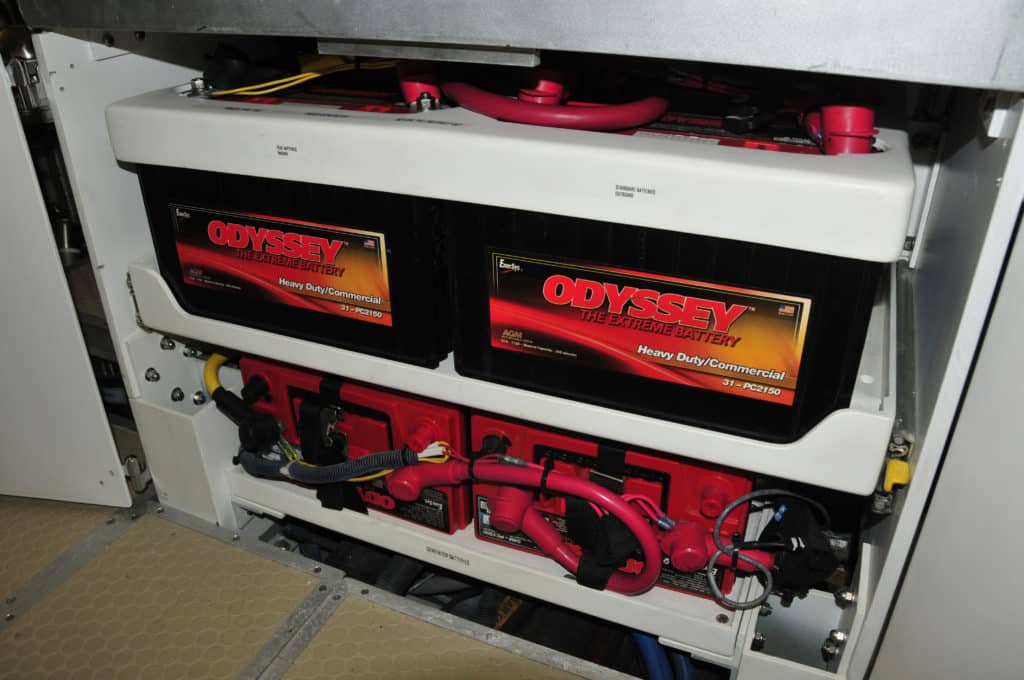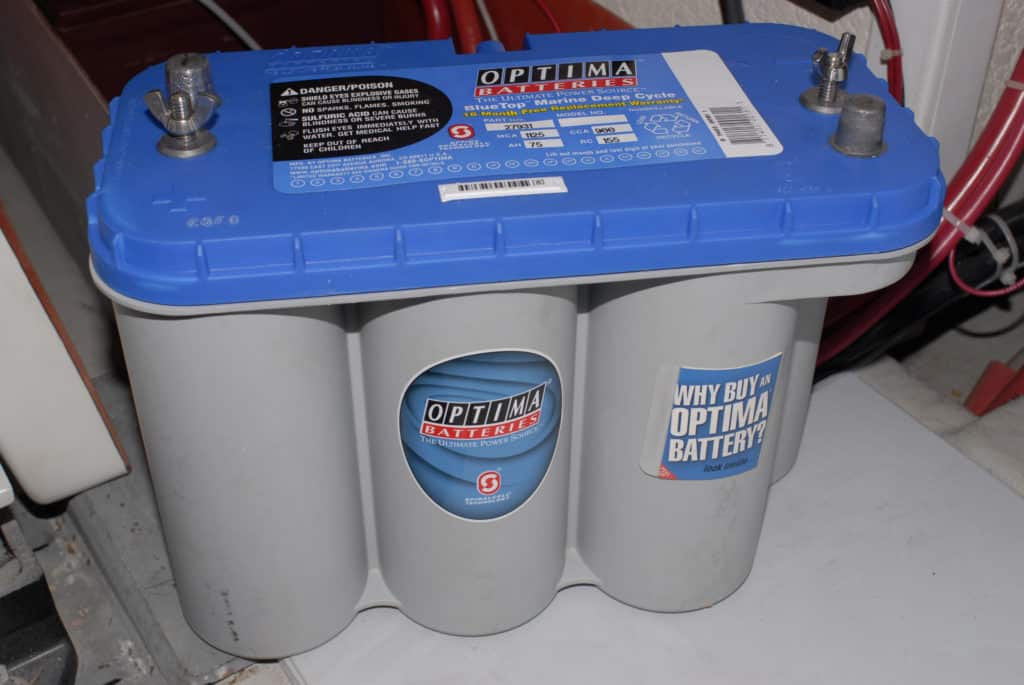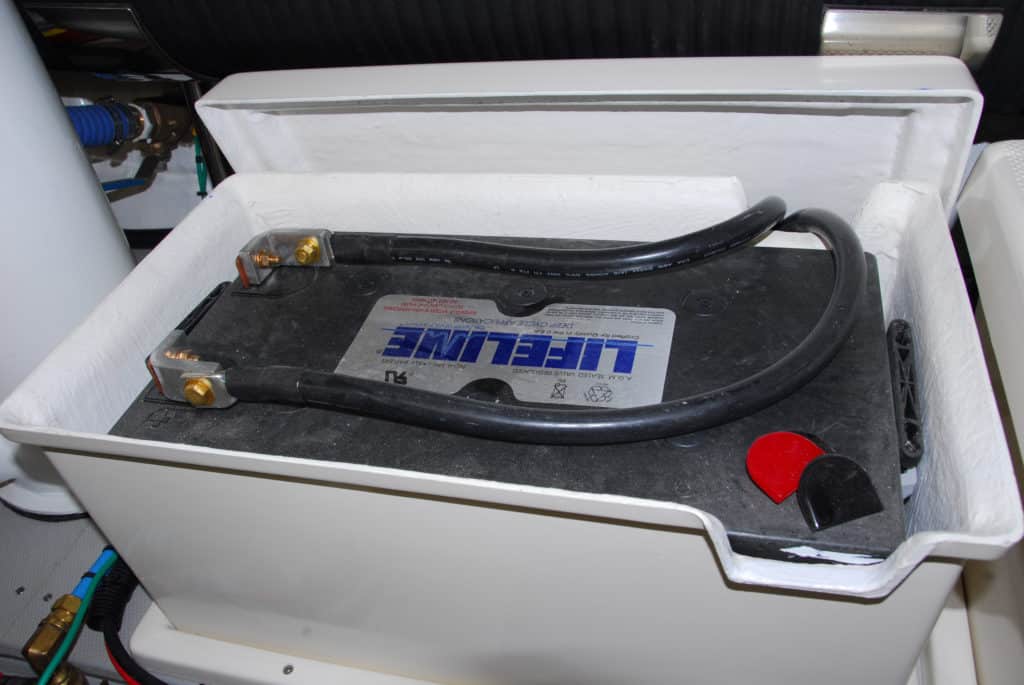

The technology behind marine batteries has changed a great deal in the past few decades. Previously, conventional, flooded batteries were maintenance-intensive and leak-prone. Today, most boats are equipped with sealed AGM or gel batteries. But sailors have always wanted the same things from their batteries: ample or at least adequate house capacity, maximum battery life, and short recharge times. Frustratingly for many cruisers, some or all of these desires have remained elusive, although they need not be.
The technology behind gel or AGM batteries is referred to in the marine industry as valve-regulated lead acid, or VRLA, which refers to the battery’s case design. VRLA batteries are sealed; under normal operating conditions, they vent little to no oxygen or hydrogen (which is explosive in concentrations as low as 4 percent). They require no water, which means they can be installed in less accessible locations and even on their sides or ends. They also operate under light internal pressure or a vacuum, which accounts for their occasional slightly bulging or concave appearance (which is entirely normal).
Using “recombinant” technology, the environment allows oxygen produced on the battery’s positive plate to be absorbed by the negative plate, thereby suppressing the production of hydrogen. A one-way valve (the one referred to in “valve-regulated”) at the top of each cell allows excess pressure to be released or vented while preventing air outside the battery from entering, which is why even VRLA batteries require ventilation to release hydrogen. Venting can also occur via leaks in the case, which most commonly occur adjacent to terminals.
Each time a VRLA battery vents hydrogen and oxygen, or water vapor, its life is shortened, as the electrolyte will eventually dissipate or dry out. Overcharging (at too high a voltage) is a leading cause of VRLA battery venting and premature failure.

While VRLA batteries often cost more than flooded batteries, they do have several worthwhile attributes, including their ability to accept a rapid charge. Specifications vary among manufacturers, but generally gel batteries are capable of accepting up to 50 percent of their amp-hour capacity; in the case of AGM batteries, that figure rises to 100 percent. Compare this to the 25 percent maximum charge-acceptance rate of flooded batteries. Provided the charge source output is sufficient, it’s easy to see how these figures equate to shorter recharge and engine running times.
In many cases, cruisers complain that their VRLA batteries seem to wear out prematurely. It’s important to remember, however, that VRLA batteries (and flooded deep-cycle ones, for that matter) are designed to deliver a given number of cycles (a typical “cycle” is a state of charge that ranges through 100 percent, to 50 percent, to 100 percent) over their lifetime. Thus a liveaboard sailor who cycles batteries on a daily basis may have to replace a bank after three years, while the batteries aboard a vessel that remains dockside most of its life, on a constant charge, may double that life span. But the liveaboard’s bank will almost certainly have stored and delivered more amp-hours over its lifetime than the dockside vessel, thereby offering greater value to its user, even if it has to be replaced more often.
Next month, we’ll examine the importance of properly charging VRLA batteries.
Steve D’Antonio offers services for boat owners and buyers through Steve D’Antonio Marine Consulting (stevedmarineconsulting.com).








